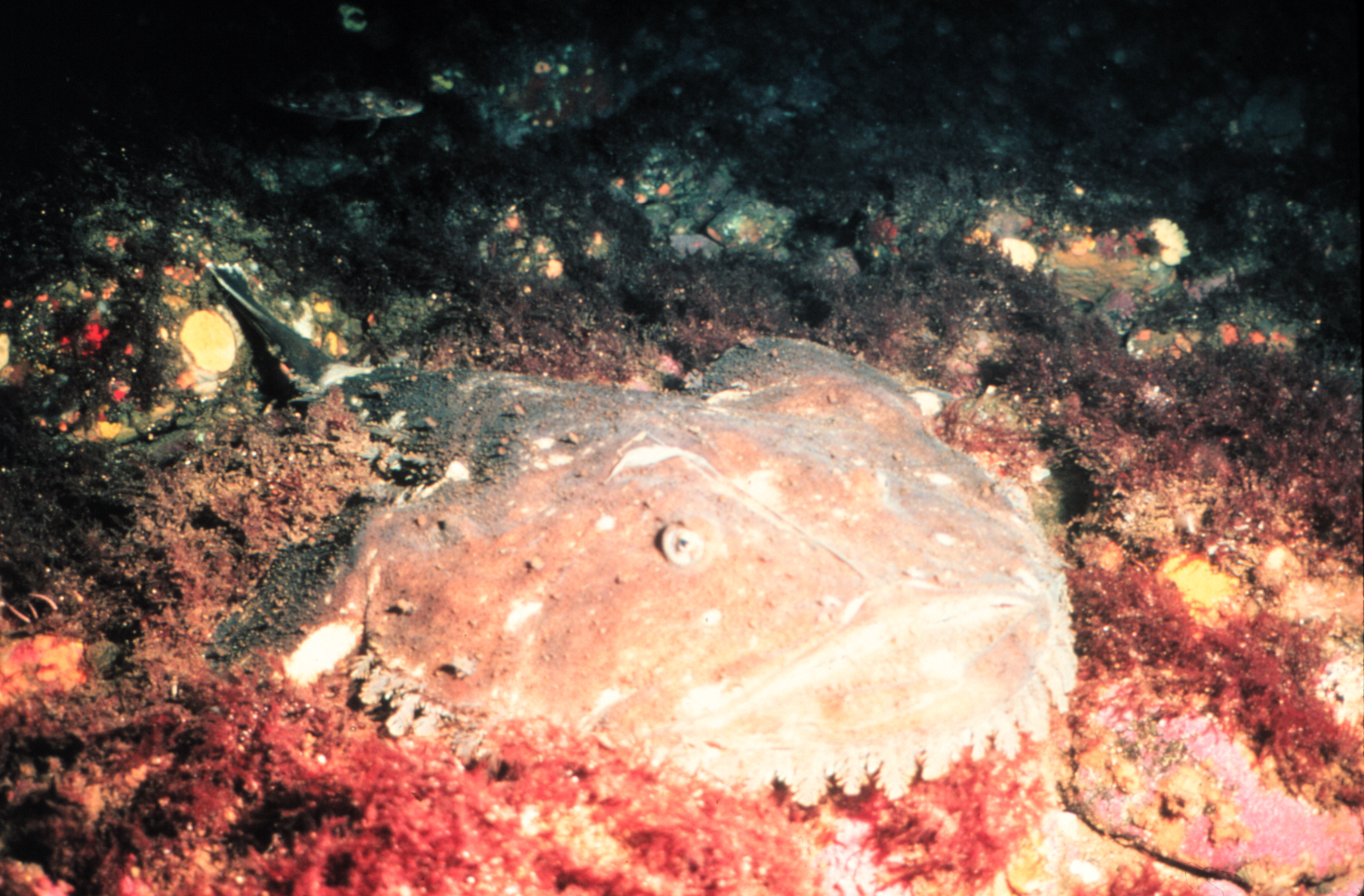- Lophius americanus
Taxobox
name = "Lophius americanus"

image_width = 240px
regnum =Animal ia
phylum =Chordata
classis =Actinopterygii
ordo =Lophiiformes
familia =Lophiidae
genus = "Lophius "
species = "L. americanus"
binomial = "Lophius americanus"
binomial_authority =Valenciennes "in"Cuvier &Valenciennes , 1837"Lophius americanus" is a
monkfish in the familyLophiidae , also called goosefish, American anglerfish, all-mouth or fishing frog. It is native to the eastern coast ofNorth America . Of the order Lophiiformes, 6 species belonging to 5 families have been spotted in the Atlantic waters off Canada.Description
The American anglerfish is unique in its appearance and has no relatives with which it can be confused in the areas where it is caught. A fish of lesser importance than other food fish in the region, such as cod, its various names suggest its unusual appearance - a very large mouth, more than twice the width of the tail, with several spines and strong teeth, enabling it to snare prey larger than itself. The body is flattened dorso-ventrally to allow it to hide on the sea floor. The front of the head carries erectile spines, the primary of which has a flattened end to resemble a small organism or piece of algae. The pectoral fins are like wide fans behind the head, and the pelvic fins are like small hands below the head.
Food use
The flesh of the anglerfish is located primarily in the body, less so in the "shoulders" and cheeks. The flesh is very white and moist, becoming quite firm when cooked. It is served both in soups and grilled, and is similar in texture to the flesh of crustaceans. Filets are thick and boneless. Connoisseurs believe the liver is also excellent. The fish is covered with a soft, scaleless, elastic skin, under which another thin edible membrane covers the flesh. Though much less so than in cod, one can sometimes find parasitic worms in the flesh of anglerfish, whose opacity can make them easier to find.
Wikimedia Foundation. 2010.
